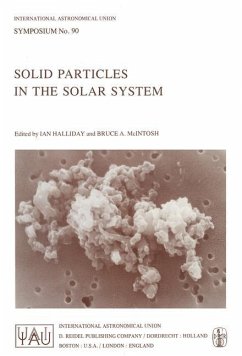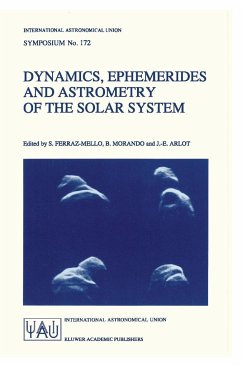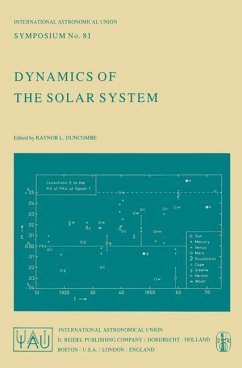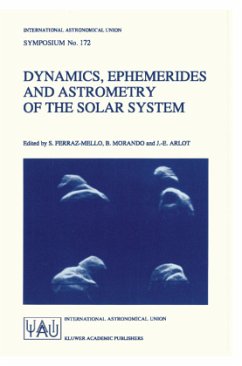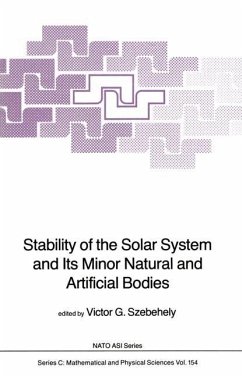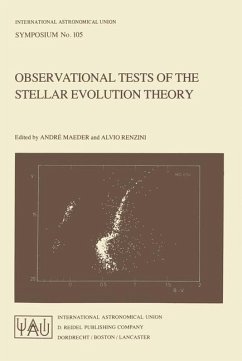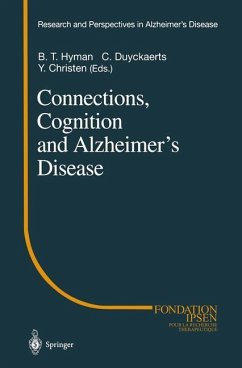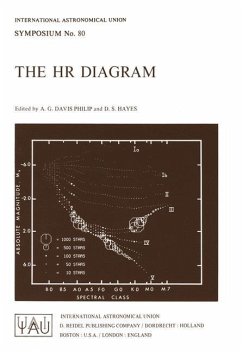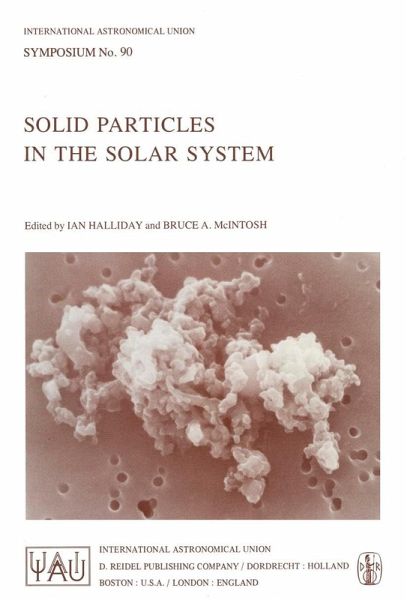
Solid Particles in the Solar System
Versandkostenfrei!
Versandfertig in 1-2 Wochen
153,99 €
inkl. MwSt.

PAYBACK Punkte
77 °P sammeln!
Our knowledge of the distribution and properties of the small solid particles within the solar system continues to improve rapidly. Much of the progress is due to observations from spacecraft which offer completely new locations from which to view phenomena such as the zodiacal light. In combination with ground-based observations and improved theoretical models, a picture now emerges with a clarity un attainable even a few years ago. The need for a survey of the situation was recognized in 1976 and, at meetings of COSPAR and the International Astronomical Union in that year, planning began for...
Our knowledge of the distribution and properties of the small solid particles within the solar system continues to improve rapidly. Much of the progress is due to observations from spacecraft which offer completely new locations from which to view phenomena such as the zodiacal light. In combination with ground-based observations and improved theoretical models, a picture now emerges with a clarity un attainable even a few years ago. The need for a survey of the situation was recognized in 1976 and, at meetings of COSPAR and the International Astronomical Union in that year, planning began for a symposium to be held in 1979 at a time and place convenient for those attending the IAU General Assembly in Montreal. The result was IAU Symposium No. 90, "Solid Particles in the Solar System", held at the University of Ottawa, from August 27 to 30, 1979. This volume includes eleven invited papers intended to survey par ticular areas of the overall subject and numerous contributed papers providing more detail on specific problems. We hope the combination will prove valuable to both the general reader interested in the current picture of the particles in interplanetary space and also to the specialist involved in research in the field.



